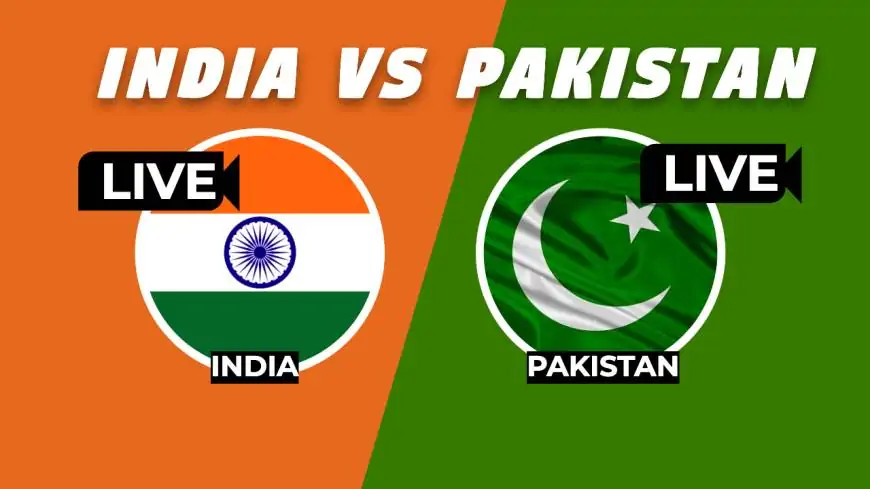The delicate balance of life between the two countries continues to be a hot topic at a global level but after so many conflicts between the two neighbours and with both the countries beign nuclear power, it always will be.
After weeks of fighting and a ceasefire brokered during the last days of intense fighting under international pressure, a night of broken promises and renewed chaos, however, awaited the city.
The hours following the ceasefire announcement demonstrated just how precarious the situation still is, from drone incursions to emergency blackouts. And here is a full summary of what happened and what it means.
Also read: 10 Best Indian Army Films That Celebrate Bravery and Patriotism
1. Operation Sindoor: Precision Air Strikes Against Terror Camps by India
India acted already decisively before the ceasefire was announced. That was followed by the Indian military's operation 'Sindoor' on May 7, against nine terror camps in Pakistan and Pakistan-occupied Jammu & Kashmir (PoJK). This surgical strike was carried out in self defence following Pahalgam terror attack in which some Indian security personnel lost their lives.
This operation marked a departure from India's security doctrine, wherein earlier, diplomatic protests were the only answer to cross-border terrorism. Instead, India signalled that now every terrorist act would be treated as an act of war where the natural response would be military retaliation.
2. Pakistan’s Drone Attacks & India’s Swift Interception
Just as the ceasefire was being finalized, Pakistan retaliated by sending armed drones into Indian airspace, targeting areas in Jammu & Kashmir, Punjab, Rajasthan, and Gujarat. Fortunately, India’s advanced air defense systems intercepted most of these threats.
However, the psychological impact was immediate. Sirens blared across border towns, and emergency blackouts were enforced to minimize visibility for potential strikes. The fear of escalation was palpable—especially since both nations possess nuclear arsenals.
3. The US Role: Diplomacy or Pressure?
The United States played a crucial role in pushing for de-escalation. US Secretary of State Marco Rubio revealed that high-level discussions had taken place with both Indian and Pakistani officials. Vice President JD Vance reportedly called PM Modi directly, warning that continued hostilities could lead to a "dramatic escalation" over the weekend.
While the US took credit for the ceasefire, the quick breakdown of the truce raised questions: Was this diplomacy, or just temporary pressure that couldn’t hold?
4. The Ceasefire That Lasted Only Hours
Within just a few hours of the agreement, Pakistan violated the ceasefire, shelling areas near Srinagar and other border regions. Former J&K Chief Minister Omar Abdullah took to X (formerly Twitter) to express his frustration:
“What the hell just happened to the ceasefire? Explosions heard across Srinagar!!! This is no ceasefire.”
The sudden return to violence proved that trust between the two nations remains dangerously low.
5. India’s Strong Retaliation & New Security Doctrine
India’s response was swift and firm. Foreign Secretary Vikram Misri condemned Pakistan’s actions, stating:
"This intrusion is extremely condemnable, and Pakistan is responsible for it."
The government also issued a new ultimatum: Any further violations would be met with a "strong military response." This wasn’t just rhetoric—India had already revised its security policy to treat terrorism as an act of war, lowering the threshold for full-scale retaliation.
6. China’s Quiet Diplomacy: A Phone Call with NSA Doval
Amid the chaos, Chinese Foreign Minister Wang Yi spoke with India’s National Security Advisor Ajit Doval. According to China’s Foreign Ministry, Doval emphasized that "war was not India’s choice" but reiterated India’s right to defend itself against terrorism.
This conversation was significant—China, a close ally of Pakistan, was indirectly acknowledging India’s concerns.
Also read: Pranitha Subhash Wiki Biography: Actress | Model | South Indian Star
7. Emergency Measures: Blackouts & Red Alerts
As drone intrusions continued, blackouts were enforced in multiple border districts to disrupt enemy surveillance. Amritsar was placed under a red alert, with authorities urging residents to stay indoors.
For locals, this was a grim reminder of how quickly tensions could spiral out of control.
8. The Human Cost: Soldiers & Civilians on Edge
While high-level talks dominated headlines, the real suffering was on the ground. An Indian Army sentry at Nagrota Military Station was injured in a brief exchange of fire with suspected infiltrators. Search operations were launched, but the psychological toll on soldiers and civilians was undeniable.
9. The Bigger Picture: What This Means for Future Relations
This episode exposed three harsh realities:
-
Ceasefires are fragile—without deep diplomatic engagement, they can collapse instantly.
-
Pakistan’s military establishment may not fully control militant groups, making peace deals unstable.
-
India’s new doctrine means tougher responses—future terror attacks could trigger immediate military action.
10. What Happens Next?
For now, the guns have fallen silent again. But the underlying issues—cross-border terrorism, territorial disputes, and mutual distrust—remain unresolved.
The world will be watching closely. Will there be meaningful dialogue, or is another crisis just around the corner?
Final Thoughts
The India-Pakistan conflict is more than just border skirmishes—it’s a volatile mix of history, politics, and security threats. The recent ceasefire breakdown proves that paper agreements mean little without genuine commitment to peace.
For now, all eyes remain on the LoC. One thing is certain: The next move could change everything.
What do you think? Can India and Pakistan ever achieve lasting peace, or are we doomed to repeat this cycle? Share your thoughts in the comments below!








